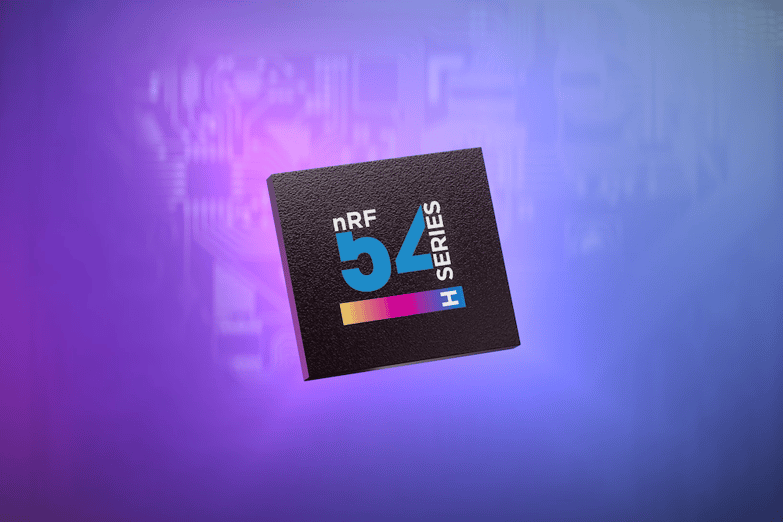Back to articles
Sky’s the limit for wearables thanks to next gen wireless SoCs

As recently as 2010, class-leading activity trackers generally recorded three parameters - how much you moved, and approximately how much sleep you got and how many calories you burned. Movement was measured by an embedded accelerometer, alongside a 25 MHz processor, 8 kB RAM and 128 kB Flash memory. Add in a rechargeable battery and that was about all the tech you needed to power a wearable in the early 2000s.
In the intervening years as the technology has advanced, fitness trackers have not only become vastly more sophisticated in terms of what data they are able to record, the line between fitness, health and medical monitoring has become increasingly blurred. Today’s high-end wearables can support an impressive array of sensors to record, for example, the wearer’s V02 max, blood oxygen saturation (Sp02), temperature, heart rate, and heart rate variability (HRV), as well as the sleep and activity data their early predecessors pioneered.
Wearables crossover from fitness to health
The heart monitoring capability of today’s wrist-worn devices has transformed the wearable from a fitness tracker to a powerful tool for managing an individual’s cardiovascular health. Heart rate and HRV, alongside skin temperature measurements, have also been shown to be valuable in predicting and detecting hypoglycemia[1], enabling next generation wearables to also provide insight on an individual’s blood glucose history and associated diabetic risk. Further, data from these same sensors can provide stress and heart rate data, that combined with sleep quality information, can provide valuable insight into an individual’s mental health, and assist in better managing stress and anxiety[2].
Next gen SoCs optimized for sensor fusion and ML
Demand for ever more sophisticated wearables is placing increasing demand on the wireless SoCs that power the devices. Supporting wireless connectivity and supervising a host of sensors that can generate millions of data points is one thing. But making sense of all that data in context and quickly enough to enable rapid and effective clinical intervention demands an SoC with serious processing heft, and the ability to perform machine learning (ML) and sensor fusion at the edge.
ML algorithms bring the ability to deal with a large volume of data and extract clinically relevant information from large datasets. This makes ML useful, for example, in healthcare wearables designed for human activity recognition (HAR). HAR enables a wearable to determine both specific ambulation activities (whether the wearer walking or jogging, for example) and functional activities (have they brushed their teeth, washed their hands, prepared food?). Assessing such activities and making inferences can help discern an individual’s health and wellness[3].
To get that complete picture requires combining different data streams from multiple sensors, and that requires an SoC capable of sensor fusion so it can filter information and determine which data points from all the different sensors correspond to the same activity or health concern, and which do not.
Nordic nRF54 Series future ready for advanced wearables
Nordic Semiconductor has always taken the “if you build it the developer will find innovative ways to use it” approach to SoC development. In other words, the applications that require the processing power or memory allocation its cutting-edge technology provides may not have been dreamed up yet - but put the chips in the hands of clever engineers and they soon will be.
This has never been more true than with the launch of the company’s revolutionary nRF54H20 and nRF54L15 multiprotocol SoCs. While their immediate predecessor the nRF5340 was the world’s first wireless SoC to feature two Arm Cortex-M33 processors, the nRF54H20 now boasts multiple Arm Cortex-M33 processors and multiple RISC-V coprocessors. The processors are clocked at up to 320 MHz and are supported by 2 MB non-volatile memory and 1 MB of RAM. This processing power and amount of memory make the SoC perfect for running ML models and sensor fusion at the edge.
State-of-the-art security to protect sensitive data
The nRF54H20 is also one of the most secure low power, multiprotocol SoCs on the market, essential for healthcare applications that demand security of potentially sensitive personal data. Its state-of-the-art security is designed for Platform Security Architecture (PSA) Certified Level 3 IoT security standard. The SoC also supports security services such as Secure Boot, Secure Firmware Update, and Secure Storage, and has cryptographic accelerators that are hardened against side-channel attacks and tamper sensors that detect an attack in progress and take appropriate action.
By replacing multiple components with a highly integrated SoC, and prolonging battery life with an ultra-low power radio and minimal sleep currents, tomorrow’s healthcare wearables powered by the nRF54H20 will continue to get smaller and become more efficient and functional, and in so doing will be able to capture various health metrics that are not possible to capture today. The rest will be down to the imagination of the developers.
References
1. The Potential of Current Noninvasive Wearable Technology for the Monitoring of Physiological Signals in the Management of Type 1 Diabetes: Literature Survey. National Institutes of Health, 2022.
2. A Survey on Wearable Sensors for Mental Health Monitoring. National Institutes of Health, 2023.
3. Wearable multi-sensor data fusion approach for human activity recognition using machine learning algorithms. B Vidya, Sasikumar P, 2022


